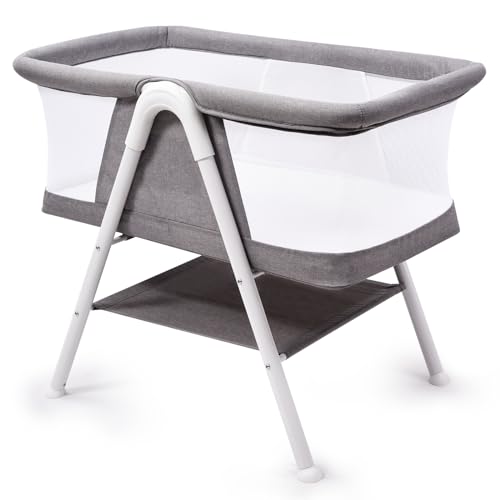How to Choose a Sale Cot
Mortuary Cots are an important piece of equipment used in funeral homes and hospitals. They allow staff to safely and with respect transport bodies. They provide a dignified, comfortable resting place for a body.
COTS products play an important role in the federal market however they aren't easy to manage. This blog will discuss how COTS can be integrated into GSA schedules and other rules for government procurement.
Cost-effectiveness
The use of commercial-off-the-shelf (COTS) products allows procurement agencies to gain efficiencies by purchasing items that are readily available from the marketplace. This can reduce the time to develop and also the life-cycle cost. It lets procurement agencies take advantage of the latest technological advances and industrial experience.
It is important to be aware that COT definitions can be subjective, and that different organizations may interpret COTS items in different ways. This could pose a problem for a company that is relying on a consistent method to calculate accurate government prices. GPOs and wholesalers for example, often have a list that is not the same as the list used by manufacturers to calculate government pricing. A well-documented SOP and a COTS reference library are essential elements in applying an effective and consistent methodology for assigning COTs.
Reliability
Sale cot is an important purchase for mortuary facilities. It should be durable and durable enough to withstand heavy usage. It should also be easy to transport and set up. The manufacturer should provide good customer service in the event of any after-sales issues. Take feedback from your employees prior to making a decision. They are the ones who will use the cots, and will determine if the cot is sturdy and reliable.
Wholesalers and GPOs often assign COT codes that do not align with the supplying manufacturer's list of COTs. This is due to many factors, such as changing business models, mergers, and acquisition activity. This poses challenges to the application of an unreliable lens to classify COTS.
Durability
The durability of sale cots is crucial because they need to be able to endure the rigors of heavy use and frequent transport. Many funeral homes use these cots to display the body remains, and they have to be strong enough to withstand the weight of the casket as well as other items placed on the top. Cots must also be resistant against corrosion and possess an easy-to-assemble, sturdy structure. It is important to choose an organization that provides customer service and can assist with any problems that might arise following the purchase.
Solid wood cots make the ideal furniture for babies, because they're durable and less prone to contain toxic chemicals or off-gassing than composite materials like MDF or Chipboard. They also look more appealing than cheaper alternatives.
The Westport design by Silver Cross is a great option for those who want a cot and lounge chair in one. The cot is made of an extremely durable fabric, and is available in three different levels of height that are suitable for infants who are growing. The instructions can be confusing but once you've got it together this cot will be a great addition to your family well.
The Helinox Cot One may be the tiniest cot, however it's not as durable as the other models we've tested. It also has lots of parts, so it is more difficult to put together than other cots. It's a comfortable cot, and an excellent option for backpackers. It's also 14 oz lighter than the Thermarest Luxury Lite and Sleep Rite.
cheap cot bed
If you're providing cots, you must ensure they are in compliance with the safety standards. This is a vital step to avoid injuries and deaths to children. The best way to do this is by confirming with your supplier that their products have been tested independently. Ask them to provide you with the results. Alternatively, you can arrange your own testing.
It's crucial to verify the safety of your cot prior to letting your baby sleep in it, whether it's new or used. Check for a certificate of compliance from the manufacturer, along with detailed labels and warnings. It must be free of sharp edges, protrusions or gaps that can hold a child's finger or leg. Additionally there should not be footholds in the cot that children could use to climb out of.
When selecting a cot, ensure that the mattress is clean and flat. It should be able to fit comfortably with no gaps. The bottom edge of the rail should not be higher than 30mm away from the base of the mattress. If the cot's base is adjustable, ensure it is set to its lowest position.
Check that the slats and filler bars are fixed and don't contain any small holes which could catch clothing. There should also be no bolts, nuts or corner posts that extend more than 5 mm that could catch a child's fingers and cause strangulation. Also, make sure the crib is free of loose blinds and curtains which could be pulled off by small hands.
Lastly check for a certificate which indicates that the cot has been evaluated to the standards required by law and is in compliance with Australian Standards AS/NZS 2172:2003 Cots for household use-safety requirements. This is the only way to ensure that the cot you're buying is safe and suitable for sleeping. It is illegal for retailers, antique stores and second-hand stores to sell antique cots with no labels or certificates.

While the majority of designers and manufacturers are diligent in ensuring that their products are safe, accidents may occur. Older cots that were used by children may not meet safety standards and could be a danger of being suffocated or ingestion of foreign bodies.
